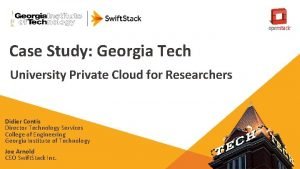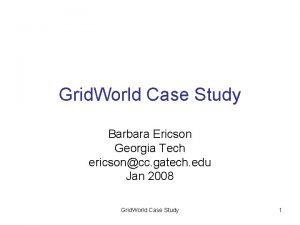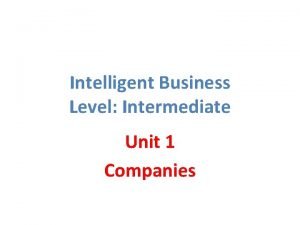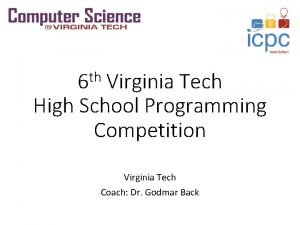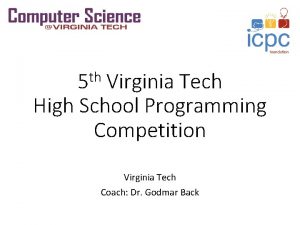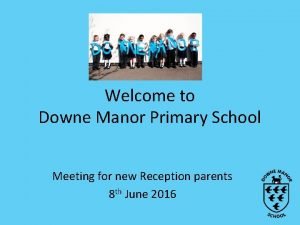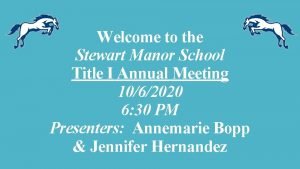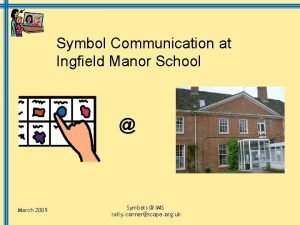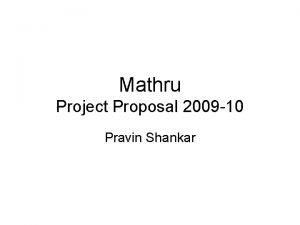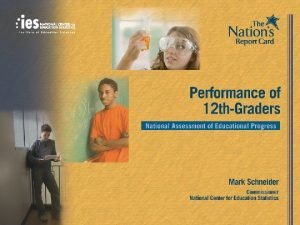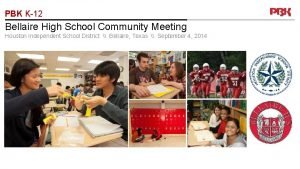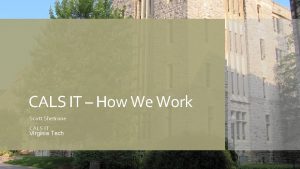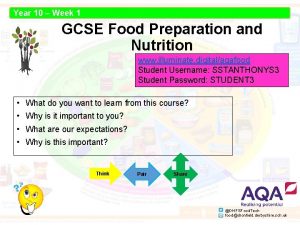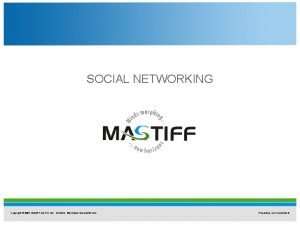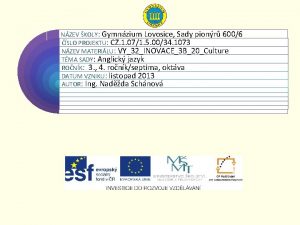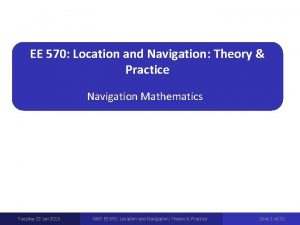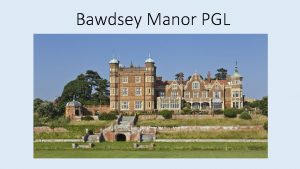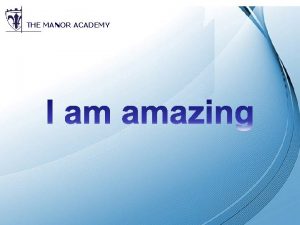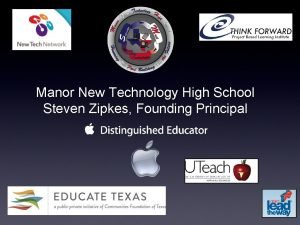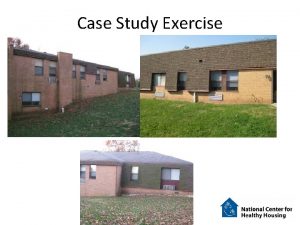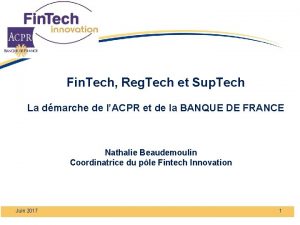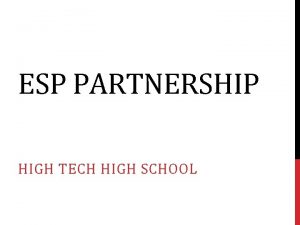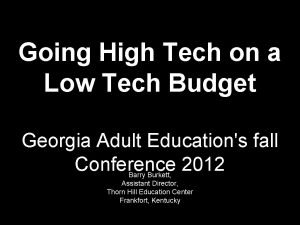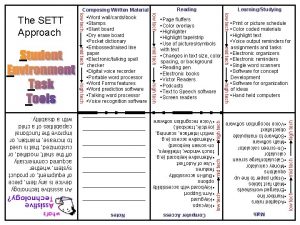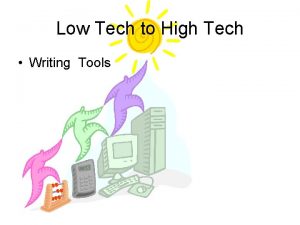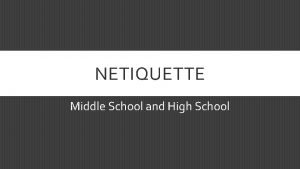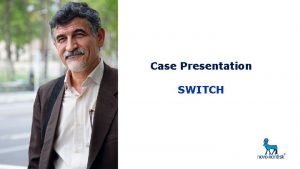Case Study of Manor New Tech High School





















![Teacher Agency I value most] the students, my colleagues, the environment, the philosophy, and Teacher Agency I value most] the students, my colleagues, the environment, the philosophy, and](https://slidetodoc.com/presentation_image/1e3c1c2ed2eab393d3bd51b12ab22f28/image-22.jpg)






- Slides: 28

Case Study of Manor New Tech High School: Promising Practices for Comprehensive High Schools Food For Thought Luncheon January 20, 2010 Hosted by Hannah Gourgey www. e 3 alliance. org

What is the E 3 Alliance? A regional collaborative to increase economic outcomes by aligning our education systems to better fulfill the potential of every citizen. Ø The P-16 Council of Central Texas Ø A catalyst for systemic change in the region © E 3 Alliance 2010

3 E Alliance Model for Change The Blueprint for Educational Change. TM

History of the Blueprint • Based on 2 years of research and thousands of hours of engaging the community • Brought together 150 business CEO’s, college presidents, community and education leaders to set priority goals • Developed an unprecedented, comprehensive strategic plan • Includes priority goals, indicators and targets, partners, action strategies, going forward

Central Texas’ Strategic Plan to build the strongest education pipeline in the country

History of the Central Texas Engineering Education Collaborative • Engineering/Comp Science 2 nd highest demand occupation – yet many barriers to success • Determined a regional collaborative including districts, IHES, Community and Industry Partners needed to address issues • Regional NSF grant for expanded pipeline • Organized network of PLTW programs, 12 High Schools in 10 Districts • Developed articulated college credit (first in state!) for HS engineering students • As a result of these and specific district efforts…. Goal 3: Students Graduate Collegeand-Career Ready and Prepared for a Lifetime of Learning

Architecture of CTEEC Partners: School Districts: Austin ISD, Georgetown ISD, Hays CISD, Lake Travis ISD, Leander ISD, Manor ISD, Pflugerville ISD, Round Rock ISD, Waco ISD, Wimberley ISD College & University Partners: Austin Community College, Texas State University, Texas Tech University, The University of Texas at Austin Community and Industry Partners: National Instruments, Skillpoint Alliance

PLTW Enrollment Grew 70% in 3 Years School Year Central Texas PLTW Enrollment Total Enrollment 2007 -2008 1416 Total Enrollment 2008 -2009 2105 Total Enrollment 2009 -2010 ~2410

CTEEC’s Inaugural Year A Big Success In…. ü 116 middle school students from diverse backgrounds experienced robotics competitions with many new industry mentors for their teams ü 124 high school students participated in a fullday engineering academy at Texas State ü 40% of these students were young women ü 64 middle and high school STEM teachers received Professional Development through PLTW, Skillpoint Alliance’s Educator Institutes, UT’s DTEACh and UTeach ESIT programs

MNTH Report Discussion • Research Questions • Methodology • Context – Manor ISD – MNTH Demographics • Findings – – Student Engagement Student Agency Support for Teachers Work Teacher Agency • Preliminary Recommendations & Suggested Further Research • Questions & Answers

Research Project at Manor New Tech High School • What are promising practices from Manor New Tech High School (MNTH) that have potential for implementation at traditional high schools? • What are the advantages to these promising practices? Co-Principal Investigators: Bahram Asiabanpour, Ph. D. , Texas State and Richard Crawford, Ph. D. The University of Texas at Austin Contributors: Carol Fenimore, Ed. D. , E 3 Alliance, Anthony Grasso, Karen Herbert

Methodology • Small scope, blended methodology: – surveys, interviews, observations and student performance data • Recent launch of MNTH limited longitudinal student performance research – Performance on state standardized tests – Performance relative to Texas Education Agency’s Comparison Group • All findings are preliminary and suggestive of further research

Context: Manor ISD • 2004 -2008 Manor ISD increased its overall student population by 80% • Close to 70% of Manor students qualify for Free & Reduced Lunch • The District’s English Language Learner population grew 144%

Context: Manor New Tech High School • New Small School launched in 2007 -2008 • Modeled on High Tech High and as a T-STEM academy (through THSP) with integrated technology in every classroom • Aspired to 12 college credits by hs graduation • MNTH implements several other programs: PLTW, TAP, FIRST Robotics, ACOT 2 • Faculty of 22 with 5 additional staff including administration • Total number of students in 2008 -2009 school year = 212

Percent Student Population Manor New Tech High School Student Population Differs from Manor High Source: E 3 Alliance Analysis of TEA AEIS data, Manor New Tech High Case Study, 2009

Student Performance Shows Overall Improvement with Notable Exceptions Source: E 3 Alliance Analysis of TEA AEIS data, Manor New Tech High Case Study, 2009

Findings: Four Key Themes • Student Engagement: level of connection, interaction, and learning students demonstrate in classroom projects and activities • Student Agency: level to which students take responsibility for their own learning, actively asking questions and seeking answers on their own as well as becoming critical thinkers and discerning users of the Internet • Support for Teachers’ Work: range of school structures, professional development and relationship-building activities that strengthen the teachers’ skills and help foster the faculty as its own professional learning community • Teacher Agency: high autonomy in the design and implementation of classroom projects, strong classroom management, improved instructional strategies, systematizes processes

Student Engagement Project Based Learning (PBL) Small group workshops Project-based Inquiry Entry documents Project Reflections All School Meetings Cross-discipline projects Project Lead the Way Integrated Technology [I value most] project based learning. (sic) Teachers that mentor and instruct students. Classrooms that are loud, but completely on topic! 15 -year olds arguing about what types of light bulbs would be most efficient to use in their project.

Student Agency Teacher Perceptions of Student Performance Median Range Teacher/Student transparency Thriving 23% 10%70% Peer Learning Performing Competently 50% 0 -65% Getting By 18% 0 -30% Struggling 10% 4 -70% Other 10% 4%-70% Professional Skills Participation in class decision making

Support for Teachers’ Work School Structures Monday Late Start Small School Environment Ubiquitous Technology Strong Campus Leadership The coolest part of working here is that in a comprehensive school we talk about analyzing our strategies, here we do it Support for innovation Participation in school mission and goal setting School-industry partnership development Professional Development Skill Development (weekly PD, Year-round PD) Relationship Building (On-demand PD, Paired Teacher Model) Here we are all each other’s mentors. We request workshops from each other just like a student would request a workshop.

Teacher Professional Development Typical Number of PD hours per year 174 36 (1 hr week) faculty in Critical Friends & cluster meetings 72 Teacher Advancement Program 24 Staff Development (district) 24 Varied 18 coaching (average NT coach 30 minutes a week) 18 New Tech Model 24 (conference attendance) 24 All Schools Conference + subject specific conference such as CAST 36 (1 hr week) new teacher training 36 Description
![Teacher Agency I value most the students my colleagues the environment the philosophy and Teacher Agency I value most] the students, my colleagues, the environment, the philosophy, and](https://slidetodoc.com/presentation_image/1e3c1c2ed2eab393d3bd51b12ab22f28/image-22.jpg)
Teacher Agency I value most] the students, my colleagues, the environment, the philosophy, and the freedom to teach “outside the box” -together these make me feel complete as a teacher and successful at what I do Teaching in [this] way is more powerful, relevant, and rewarding than in a traditional school setting. … This change has been very rejuvenating for me. I believe in what I am doing more than ever Teacher Agency Group dynamic in goal setting Strong Communication Modeling Work Ethic Dedicate, creative faculty

Challenges at MNTH • Immense Workload – Concerns about burn out & turnover • Perception of Selectivity with Students • Trimester System – Good for students, hard for teachers to cover all TEKS in 2 trimesters • Students’ Foundational Skills – Unfamiliar with culture of taking responsibility for learning – Core Math, Science, English skills lacking

Selected Practices: Criteria Ø Did a majority of teachers (both surveyed and interviewed) identify this practice as connected to teacher or student success? Ø Was there evidence (either as described through survey answers or interviews or through a review of literature) that suggests the practice leads to teacher agency or improved student outcomes? Ø Are there examples where similar practices have been undertaken successfully at traditional comprehensive high schools? Ø Can the planning and implementation of these practices occur in a timely manner without exhausting available district or school resources?

Preliminary Recommendations • Adopt Project-Based Learning Strategies in Core Courses beginning in 9 th Grade • Provide extensive PD for teachers in PBL • Offer PD to administrators in developing school structures to support PBL • Restructure School Master Schedule to allow for weekly common planning time & focused teacher interactions

Further Research Directions • Longitudinal study of individual student performance overtime, in comparison to T-STEM academies launched the same year • PBL relationship to student engagement (in comparison to their peers at a traditional comprehensive high school) • Relationship between school leadership and teacher agency • Relationship between teacher agency & student performance

Further Research Directions • Relationship between on-going professional development and teacher agency • Relationship between school structures and teacher agency • Considerations when applying PBL instructional strategy in an existing school versus a newly-launched school

Questions? • Special Thanks to the Teachers at MNHT, to Steven Zipkes and Manor ISD leadership for supporting our research, to the Dana Center, to the wonderful E 3 Staff and Grad Students: Carol Fenimore, Tony Grasso and Karen Herbert • And to
 Manor new tech high school
Manor new tech high school Low tech assistive technology
Low tech assistive technology Case study georgia tech
Case study georgia tech Gridworld case study answers
Gridworld case study answers A trendy new high-tech corporation
A trendy new high-tech corporation 2019 virginia tech high school programming contest
2019 virginia tech high school programming contest Virginia tech high school programming contest
Virginia tech high school programming contest Downe manor primary school term dates
Downe manor primary school term dates Beverley manor elementary school
Beverley manor elementary school Stewart manor school
Stewart manor school Ingfield manor school
Ingfield manor school Downe manor primary school
Downe manor primary school Best case worst case average case
Best case worst case average case Hershey's erp failure
Hershey's erp failure Case western reserve university case school of engineering
Case western reserve university case school of engineering Mathru blind school case study
Mathru blind school case study High school transcript study
High school transcript study Bellaire high school new building
Bellaire high school new building Scott case virginia tech
Scott case virginia tech Illuminate aqa food preparation and nutrition
Illuminate aqa food preparation and nutrition High tech rochester
High tech rochester Advik high tech
Advik high tech Microsoft dynamics for high tech
Microsoft dynamics for high tech High tech architektura
High tech architektura Crescenta valley high school summer school
Crescenta valley high school summer school Haltom high school summer school
Haltom high school summer school New mexico tech
New mexico tech Pgl suffolk
Pgl suffolk Lockerbie manor dorms
Lockerbie manor dorms


